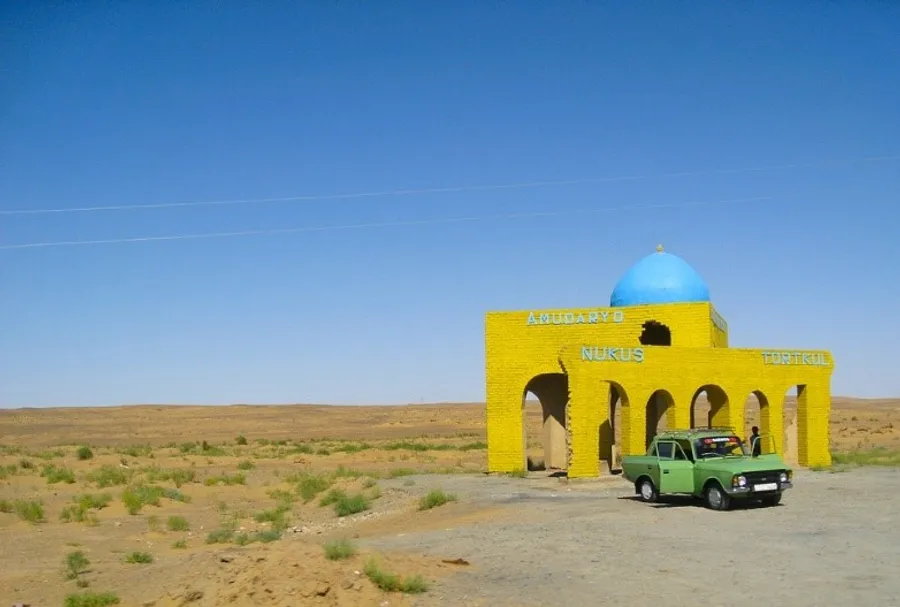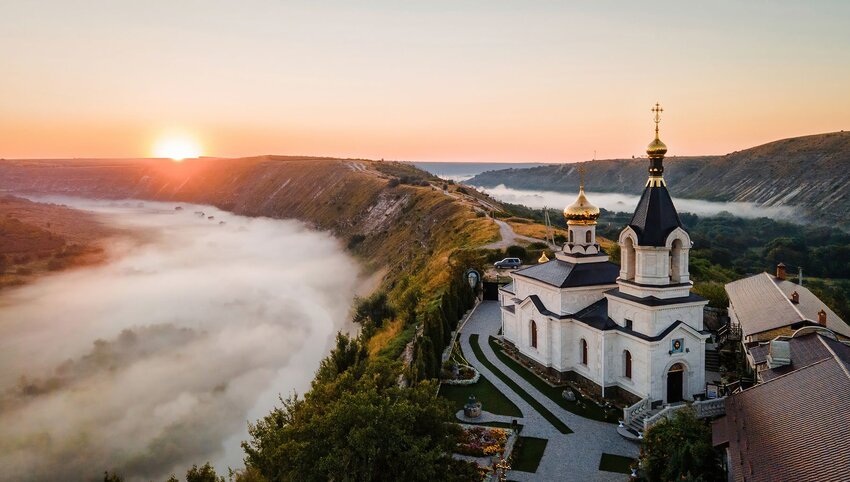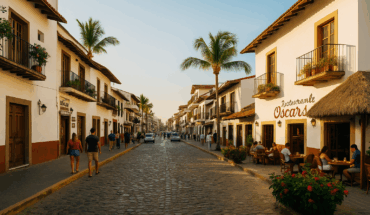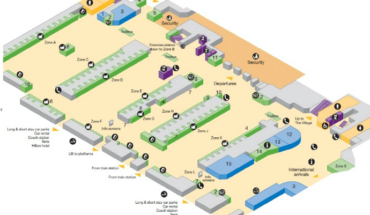The world has 196 countries, yet some are so off the beaten path that they see fewer than 200 tourists each year. These obscure nations exist everywhere on our planet. They sit right under our noses with amazing stories and surprising facts just waiting to be discovered.
Popular tourist spots draw huge crowds, but the world’s least-known countries give visitors an unmatched experience. To name just one example, see Nauru, one of the world’s most obscure countries – it has no official capital and measures just 3.5 miles at its widest point. The story of Moldova paints a similar picture as one of the world’s least-visited places with only 29,000 visitors in 2022. The country’s Milesti Mici winery holds a Guinness World Record with cellars storing more than 1.5 million bottles of wine.
These hidden nations often carry dark secrets beneath their low profiles. Mauritania became the last country to outlaw slavery in 1981, and it took another 26 years before slave ownership became a criminal offense. Lesotho, completely encircled by South Africa, doesn’t deal very well with extreme poverty that affects more than 40% of its people[-3].
The stories of these overlooked places captivate and surprise us. Malta’s ancient past and Benin’s voodoo customs rarely make the news. This trip through the world’s most obscure countries shows hidden treasures, startling facts, and complex realities that shape these fascinating yet forgotten places.

Malta: Ancient Temples and a Modern Identity
Tucked away in the Mediterranean Sea, Malta stands as one of Europe’s most fascinating yet obscure countries. This tiny island nation packs thousands of years of history into just 122 square miles. Located 60 miles south of Sicily, it once served as the literal center of the ancient world – a Bronze Age equivalent of New York City, complete with ox carts instead of subways.
A brief history of Malta’s independence
Malta’s path to becoming a nation concluded on September 21, 1964. The country gained independence from British rule after 150 years as a Crown Colony. This milestone ranks as one of Malta’s five national holidays and marked the start of its membership in the Commonwealth and later the Council of Europe. The young nation’s political landscape split between two major parties – the Nationalist Party wanted Western alignment while the Malta Labor Party embraced nonalignment.
The island became a republic on December 13, 1974, which strengthened its sovereignty. Malta’s most important modern change came with its entry into the European Union on May 1, 2004. The country later adopted the euro as its currency on January 1, 2008. Though it remains one of the most unknown countries to many travelers, Malta has built a distinct national identity within the European community.
The world’s oldest temple complexes
Malta’s most extraordinary feature lies under its Mediterranean sun – prehistoric temples that rank among the oldest free-standing structures on Earth. These megalithic monuments date back to 3600 BC through 2500 BC, making them older than both the Egyptian pyramids and Stonehenge. UNESCO has granted World Heritage status to six temple complexes – Ġgantija, Ħaġar Qim, Mnajdra, Skorba, Ta’ Ħaġrat, and Tarxien.
The architectural brilliance of these temples amazes visitors, especially since they were built during the Stone Age. Ħaġar Qim features individual stones measuring 7 meters long that weigh about 20 tons. Ġgantija on Gozo island showcases massive blocks weighing up to 50 tons. Each complex stands as a unique architectural masterpiece with elliptical forecourts, concave façades, and symmetrical semi-circular chambers. These structures served as vital ritual centers for a well-organized prehistoric society.
The Maltese dog and cultural exports
Malta’s legacy extends beyond ancient stones to include the famous Maltese dog. The Phoenicians likely brought this small white lapdog to Malta before Greece’s rise to power. The breed earned remarkable status throughout history. Aristotle called it “perfectly proportioned,” Roman aristocrats made it a fashion statement, and Emperor Claudius fell for its charm.
Today, Malta continues to share its culture through programs like the Cultural Export Fund, which provides €130,000 yearly in grants for artists to showcase their work internationally. These funds help artists travel, perform on tour, and translate their works, allowing Malta’s creative voice to reach global audiences.
This tiny Mediterranean nation shows that among obscure countries in the world, the smallest often hold the most fascinating stories and richest heritage.
Nauru: The Island Without a Capital
Nauru, the world’s only country without an official capital, lies in the remote South Pacific. This tiny island nation spans just 21 square kilometers, making it the third smallest country by area and second smallest by population. The island stands out as one of the most extraordinary obscure countries in the world.
A phosphate-rich past and economic collapse
The discovery of phosphate in 1906 changed the destiny of what was once called “Pleasant Island”. Phosphate mining turned Nauru into one of the world’s richest nations per capita during the 20th century, with GDP reaching its peak in 1981. The nation’s wealth soared in the 1980s when its per capita GDP ranked second only to Saudi Arabia.
The prosperity didn’t last long. Primary phosphate reserves had almost run out by the 1990s, and the GDP dropped by more than 90%. The unemployment rate shot up to 90%, pushing the island nation close to bankruptcy. Strip mining had destroyed about 80% of the island’s surface, leaving behind a moon-like landscape of jagged limestone pinnacles.
Tourism challenges and natural beauty
Nauru, though one of the most unknown countries, boasts incredible natural beauty. The island showcases pristine white-sand beaches, unique rock formations, vibrant coral reefs, and lush coconut groves. Deep seas reaching 2000 meters just offshore make it perfect to catch tuna, marlin, and barracuda, drawing adventure seekers.
The tourism industry remains unexplored, with yearly visits from about 200 tourists. The island’s remote location, basic infrastructure, and limited transportation options keep visitor numbers low. The high cost of living makes it an expensive destination, as most food needs to be imported.
How Nauru became a diplomatic pawn
This obscure country has found itself caught in international power plays over the last few decades. The island has hosted Australian detention centers for asylum seekers since 2001, receiving millions in aid as compensation. This setup, known as Australia’s “Pacific Solution”, provides vital financial support to the struggling economy.
The nation has made use of its United Nations membership by switching diplomatic recognition between Taiwan and mainland China several times since 2002. Nauru broke ties with Taipei and resumed relations with Beijing after Taiwan’s presidential election in 2024, becoming another piece in the ongoing diplomatic chess match between the two powers.

Benin: The Birthplace of Voodoo
Benin, a small West African nation, remains one of the world’s most obscure countries. Yet its spiritual legacy reaches way beyond the reach and influence of its borders. This country’s biggest claim to fame lies in being the birthplace of Voodoo (or Vodun), a religion that people often misunderstand but remains deeply connected to Beninese life.
Voodoo’s misunderstood origins
Hollywood gets Voodoo all wrong. The religion started in the ancient kingdom of Dahomey—now Benin—with roots in animism, where people believe everything has a spirit. The faith system came before many modern religions. Some historians say it began about 6,000 years ago.
Voodoo runs deep in Beninese culture, with 40% of people following it. Christians make up about half the population and mix Voodoo elements into their practices. The reality differs from Western media’s portrayal. Voodoo priests stress that their religion centers on positive values, tolerance, and acceptance.
Annual Voodoo Day celebrations
Benin made Voodoo an official state religion in 1996. January 10th became National Voodoo Day—a public holiday that brings the country together. The biggest celebrations happen in Ouidah, Voodoo’s spiritual heart.
These celebrations include:
- Gods’ devotees emerge from sacred forests to walk through villages
- Ouidah’s supreme feticheur, the Dagbo Houno, leads the ceremonies
- People from around the world come to see the dances, offerings, and colorful displays
The festival draws voodoo priests, followers, traditional chiefs, and curious visitors from the region. Tourism grows while the spiritual meaning stays strong.
Benin’s economic struggles and cotton trade
This obscure African country has grown into a cotton powerhouse. Production reached 728,000 tons in 2020/21. Bangladesh bought most of this “white gold” as raw material.
The country now pushes toward industrialization by building its textile industry. The Glo-Djigbe Industrial Zone shows promise with over $1 billion invested. Three textile factories will employ 15,000 people and process 40,000 tons of cotton fiber. President Patrice Talon, known as the “King of Cotton,” sees this change adding more than $5 billion yearly to Benin’s economy.
Benin stands unique as both a spiritual center and rising industrial force. Visitors discover one of Africa’s most fascinating yet unknown countries.
Lesotho: A Kingdom in the Sky
Lesotho stands out as one of the most obscure countries – a mountainous kingdom completely surrounded by South Africa. People know it as the “Kingdom in the Sky.” This landlocked nation has a unique geographic feature that makes it different from almost every country on Earth.
Geographic isolation within South Africa
Lesotho is one of just three sovereign enclaves in the world—countries that another nation’s territory completely surrounds. Unlike Vatican City and San Marino (both inside Italy), Lesotho isn’t small. It covers 30,355 square kilometers. South Africa surrounds Lesotho completely, which means the country depends on its neighbor to access the outside world.
This obscure African country has another unique feature – its elevation. Lesotho is the world’s only independent state that sits entirely above 1,000 meters. The country’s lowest point reaches 1,400 meters above sea level, making it the highest “lowest point” of any nation globally.
Snow in Africa: A rare climate
Lesotho’s high elevation creates something unexpected – regular snowfall in Africa. The country experiences cold winters unlike most of the continent. Temperatures can drop to −18°C in the highlands. The unique geography creates a temperate climate with clear seasons.
Snow shapes Lesotho’s mountainous landscape without doubt. A major winter storm hit the country in June 2025. Some areas saw 30 centimeters of snow. The Afriski Mountain Resort, the only ski facility in Lesotho at 3,050 meters elevation, ended up completely “snowed in”.
Poverty and dependence on South Africa
Life in this unknown country brings tough challenges. About 49.7% of people live below the national poverty line. Rural areas, where 70% of citizens live, face the most hardship.
South Africa and Lesotho’s economies connect deeply. Basotho workers in South African mines once sent back money that made up two-thirds of Lesotho’s gross national product. The Lesotho Highlands Water Project sends water to South Africa and creates hydroelectric power at home. This setup shows an uneven relationship – Lesotho often exports water to South Africa while its people face a lack of it.
Saint Vincent and the Grenadines: Hollywood’s Hidden Gem
Saint Vincent and the Grenadines stands as one of the most obscure countries that travelers often miss. This stunning nation of 32 islands captures pure Caribbean beauty without the tourist crowds you’ll find on neighboring islands.
Filming location for Pirates of the Caribbean
Wallilabou Bay on Saint Vincent’s west coast became famous as the fictional Port Royal in Disney’s “Pirates of the Caribbean” franchise. Johnny Depp and Orlando Bloom once walked these shores while filming. Many original set pieces remain standing today. Visitors can check out these structures and grab lunch at the Wallilabou Anchorage Restaurant surrounded by authentic movie props.
Tourism potential and natural beauty
The islands feature a striking contrast between volcanic black sand beaches and powder-white shorelines. La Soufrière volcano stands tall in Saint Vincent’s northern region and offers exciting hiking trails. Sea turtles swim through crystal waters at the pristine Tobago Cays Marine Park. The exclusive island of Mustique has become a favorite hideaway for celebrities who value their privacy in luxury villas.
The structure of the archipelago
Saint Vincent, the main island, houses about 100,000 residents and the capital city Kingstown. The Grenadines extend southward for 40 miles through the Caribbean Sea with 31 smaller islands, including Bequia, Mustique, Canouan, Union Island, and Palm Island. Just nine islands have inhabitants, which leaves many untouched paradises for adventurous travelers looking to discover unknown countries with real Caribbean charm.
Suriname: A Dutch-Speaking Anomaly in South America
Suriname sits on South America’s northeastern shoulder as the continent’s most obscure country. This small nation has fascinating contradictions that leave travelers in disbelief.
Colonial history and independence
British planters first settled Suriname in 1651, but the Dutch seized it in 1667. They traded it for New Amsterdam, which later became New York City. The colony thrived under Dutch rule with sugar, coffee, and cacao plantations worked by enslaved Africans. The society became more diverse after slavery ended in 1863. Contract workers from India, China, and Java arrived and shaped the foundation of modern Suriname.
The path to independence came late – November 25, 1975. The transition brought mixed feelings among the population. Many people didn’t share the excitement. About one-third of Suriname’s residents moved to the Netherlands because they worried their new nation wouldn’t survive.
Political controversies and corruption
Their concerns turned out to be valid. Sergeant-Major Dési Bouterse led a government takeover in 1980. His dictatorship became notorious after he executed 15 political opponents in December 1982. The country struggled with political instability and corruption allegations in the years that followed.
The situation hasn’t improved much. Suriname ranks low on international corruption indices. People often exchange irregular payments for favorable court decisions and public contracts. The gold mining industry runs with little oversight. Illegal operations make up more than two-thirds of all mining activity.
Cultural diversity and language uniqueness
The most remarkable feature of this unknown country is its exceptional diversity. Suriname has no ethnic majority. The population breaks down into Hindustanis (27.4%), Maroons (21.7%), Creoles (15.7%), and Javanese (13.7%).
Dutch stands as the official language, which makes Suriname unique. It’s the only independent nation outside Europe where Dutch rules government, business, media, and education. This unusual language situation exists alongside a rich religious mix – Christianity (45.2%), Hinduism (22.3%), and Islam (13.8%). These elements combine to create one of the world’s most diverse cultural landscapes.
Summing all up
These hidden gems are some of the world’s most captivating places you’ve never heard of. Each country tells extraordinary stories through its unique culture and remarkable landscapes that match their famous neighbors.
People looking for real adventures will definitely find them in these off-the-beaten-path places. Malta shows proof of human achievement with temples older than the pyramids. Nauru tells a story of economic ups and downs but rewards visitors with pristine beaches and amazing fishing spots.
Benin’s spiritual wealth shows how Voodoo practices still thrive among modern life. Lesotho amazes people with its snow-capped peaks and stands as the only country that sits entirely above 1,000 meters.
Saint Vincent and the Grenadines draws visitors with its movie star connections and untouched Caribbean beauty. Suriname catches everyone off guard with its exceptional mix of cultures and unexpected Dutch heritage in South America.
These lesser-known places become special when you have real connections with local communities. They give you pure cultural experiences and natural wonders that mass tourism hasn’t touched. The real joy comes from stepping away from popular destinations.
These nations face big challenges – money problems, environmental issues, and political troubles. Yet they open windows into fascinating worlds that rarely make the news. Bold travelers who explore these hidden spots come back with stories few others can tell.
These overlooked countries remind us that the best places are often the ones we never knew were there.
Here are some FAQs about obscure countries:
What is the most uncommon country?
Tuvalu is often considered one of the most obscure countries in the world due to its tiny population and remote Pacific location. Among obscure European countries, San Marino stands out as an uncommon destination despite its long history. These obscure countries receive few visitors and little international attention compared to more prominent nations.
What is the most unusual country?
Bhutan ranks as one of the most unusual and obscure countries with its unique Gross National Happiness philosophy. Other most obscure countries like Nauru, a single-island phosphate nation, also qualify as highly unusual. Their distinct cultures and governance systems make them stand out among obscure countries in the world.
What are the 3 Z countries?
The three countries starting with Z are Zambia, Zimbabwe, and Zanzibar – though Zanzibar is actually a semi-autonomous region of Tanzania. While not the most obscure countries, they receive fewer visitors than many destinations. Among obscure European countries, none begin with Z, making these African nations particularly distinctive alphabetically.
What are the 10 less developed countries?
Some of the least developed obscure countries in the world include South Sudan, Burundi, and the Central African Republic. These most obscure countries face significant economic challenges and infrastructure limitations. Other obscure countries like Kiribati and Comoros also rank low on development indexes while remaining geographically remote.
Which country is very unique?
Vanuatu is among the most unique obscure countries with its active volcanoes and traditional land diving rituals. The obscure European country of Liechtenstein, a doubly-landlocked microstate, also stands out for its uniqueness. These obscure countries in the world offer cultural and geographical features found nowhere else on Earth.
What is the most forgotten country in the world?
São Tomé and Príncipe is frequently cited as the most forgotten among obscure countries, a tiny island nation off Africa’s coast. Other most obscure countries like Comoros or Kiribati also receive minimal global attention. Even obscure European countries like Andorra are better known than these remote island states.
Are there any hidden countries?
While no countries are truly hidden, some most obscure countries in the world like Tuvalu or Nauru remain virtually unknown to many. These obscure countries have small populations and limited global influence. Even in Europe, obscure European countries like San Marino or Liechtenstein might qualify as “hidden” to casual observers.
What is the most misunderstood country in the world?
North Korea is arguably the most misunderstood among obscure countries due to its isolation and limited access. Other obscure countries in the world like Turkmenistan also suffer from widespread misconceptions. These most obscure countries often have complex realities that differ dramatically from common perceptions.
What is the beautifullest country in the world?
While subjective, Bhutan is frequently named among the most beautiful obscure countries with its Himalayan landscapes. Other most obscure countries like Seychelles or Vanuatu boast stunning natural scenery. Even obscure European countries like Montenegro compete with breathtaking coastal and mountain vistas.


